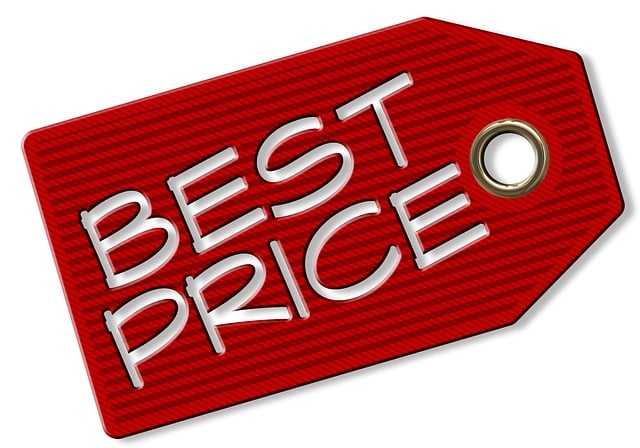Retailers can boost pricing strategies by understanding consumer behavior dynamics, leveraging mental accounting and psychological tactics like odd number appeal, scarcity marketing, and social proof. Price segmentation, along with real-time optimization using machine learning, enables balanced revenue maximization while catering to price-sensitive customers. Transparent price discrimination improves satisfaction levels through personalized promotions. Effective pricing tactics enhance customer experiences, drive sales, and provide a competitive edge in today's market.
Learn how to harness the power of psychology in setting retail prices and boost your sales. This article delves into the science behind consumer behavior, exploring key psychological principles that drive purchasing decisions. We’ll uncover strategies like understanding perceived value, leveraging mental accounting, employing odd number pricing, creating urgency, and cultivating a sense of scarcity. By applying these tactics, you can optimize pricing for maximum impact and profitability.
- Understanding Consumer Behavior and Preferences
- The Impact of Perceived Value on Pricing Decisions
- Using Mental Accounting to Set Retail Prices
- Psychological Pricing Tactics: Odd Number Appeal
- Creating a Sense of Urgency and Scarcity
Understanding Consumer Behavior and Preferences

Understanding consumer behavior is a cornerstone when setting retail prices. Consumers’ preferences are shaped by a myriad of factors, including past experiences, social influence, and their perceived value of products. By employing psychological insights into these factors, retailers can optimize pricing strategies. For example, emphasizing limited-time offers or showcasing product scarcity can create a sense of urgency, driving impulse purchases. Moreover, leveraging social proof through customer reviews or influencer endorsements can sway price-sensitive customers who are initially hesitant to pay higher prices.
Gaining a deep understanding of the price sensitivity of your target audience is crucial for effective pricing. Price optimization tools that leverage machine learning algorithms analyze vast amounts of data on customer behavior and market trends, enabling retailers to fine-tune prices in real-time. This dynamic approach ensures optimal pricing strategies that balance maximizing revenue with attracting and retaining customers. While price discrimination—setting different prices for the same product based on segments—carries ethical considerations, when implemented transparently and equitably, it can offer advantages like personalized offers and improved customer satisfaction, ultimately contributing to a successful retail experience. Find us at discounts and promotions management.
The Impact of Perceived Value on Pricing Decisions

In the retail industry, the perception of value is a powerful driver behind pricing decisions. Consumers don’t always make purchases based on the actual cost; instead, they evaluate the perceived worth of a product, which can significantly influence their spending behavior. A higher perceived value often justifies a higher price point, while a lower one might prompt consumers to expect discounts or promotions. Understanding this dynamic is crucial for retailers aiming to optimize pricing strategies.
Price elasticity examples illustrate how sensitive consumers are to price changes. For instance, luxury goods often have higher price elasticity as customers perceive them as exclusive and may not be immediately replaceable. Conversely, essential items like groceries typically have lower price elasticity, meaning consumers are less price-sensitive when it comes to necessities. Retailers can leverage these insights by segmenting their customer base using price segmentation techniques (give us a call at price segmentation techniques) and applying tailored pricing strategies that consider both the product’s inherent value and the consumer’s perception of that value, thus ensuring optimal pricing decisions while accounting for legal aspects of price discrimination.
Using Mental Accounting to Set Retail Prices

In the realm of retail pricing strategies, understanding consumer psychology is a game-changer. One powerful tool that retailers can leverage is mental accounting—the way individuals categorize and value different types of expenses in their minds. By appealing to this mental accounting, businesses can influence customers’ perceptions of prices and drive sales. For instance, presenting a digital product’s price as a small investment for long-term benefits can make it more appealing, especially if it helps improve customers’ negotiating skills for better future purchases.
When setting retail prices, it’s essential to consider the distinction between fixed and variable costs. Fixed costs remain constant regardless of sales volume, while variable costs fluctuate with each sale. By offering discounts or promotions that highlight these cost structures, retailers can encourage impulse buys or attract price-conscious shoppers. For example, a store might promote an item as having “fixed vs variable costs,” where the initial price includes certain fixed fees, making subsequent purchases seem more cost-effective. This strategy can be particularly effective in competitive markets, where consumers are attuned to saving money while still receiving quality products or services.
Psychological Pricing Tactics: Odd Number Appeal

Psychological Pricing Tactics: Odd Number Appeal
One powerful psychological pricing strategy involves using odd numbers instead of even ones. Studies show that people tend to perceive odd prices as significantly lower than they are, a phenomenon known as “odd number appeal.” For example, customers often view a price of $49.99 as considerably more attractive than $50. This tactic exploits the human tendency to round up when dealing with numbers and can increase sales. Retailers can leverage this psychological quirk by setting prices ending in .99 or other odd digits to encourage purchases without making customers feel they’re overpaying.
Understanding the elasticity of different goods, whether wholesale pricing dynamics are more fixed or variable, is crucial in implementing such strategies. A thorough competitive analysis for pricing, including finding us at your industry’s price points, allows retailers to position their products strategically. Unlike traditional pricing models that focus solely on cost-plus or fixed vs variable costs, incorporating psychological tactics can enhance the overall customer experience and drive sales.
Creating a Sense of Urgency and Scarcity

Creating a sense of urgency and scarcity is a powerful psychological tactic that can significantly influence consumer behavior when setting retail prices. By presenting products or services as limited in availability, retailers can prompt customers to make quicker purchasing decisions. For instance, using phrases like “only a few left in stock” or “special offer for the next 24 hours” creates a fear of missing out, encouraging immediate action. This strategy leverages human psychology, where the fear of losing an opportunity often drives people to buy impulsively.
This technique is especially effective when combined with negotiation skills and an understanding of profit maximization techniques. Retailers can use bundle pricing, offering items at discounted rates when purchased together, to attract customers who are savvy about finding us at fixed vs variable costs. By appealing to the customer’s desire for a bargain, retailers can increase sales and enhance overall satisfaction. Additionally, these strategies provide an edge in competitive markets, ensuring businesses stay ahead by implementing effective psychological pricing methods that drive revenue while maintaining a positive customer experience.
By leveraging psychological principles, retailers can optimize their pricing strategies to better meet consumer expectations. Understanding how factors like perceived value, mental accounting, and behavioral biases influence purchasing decisions allows for setting prices that resonate with customers. Incorporating tactics such as odd number pricing, creating a sense of urgency, and managing perceptions of scarcity can drive sales while maintaining profitability. In essence, applying these psychological insights to retail pricing is not just about increasing revenue; it’s about cultivating a smarter, more effective shopping experience.
